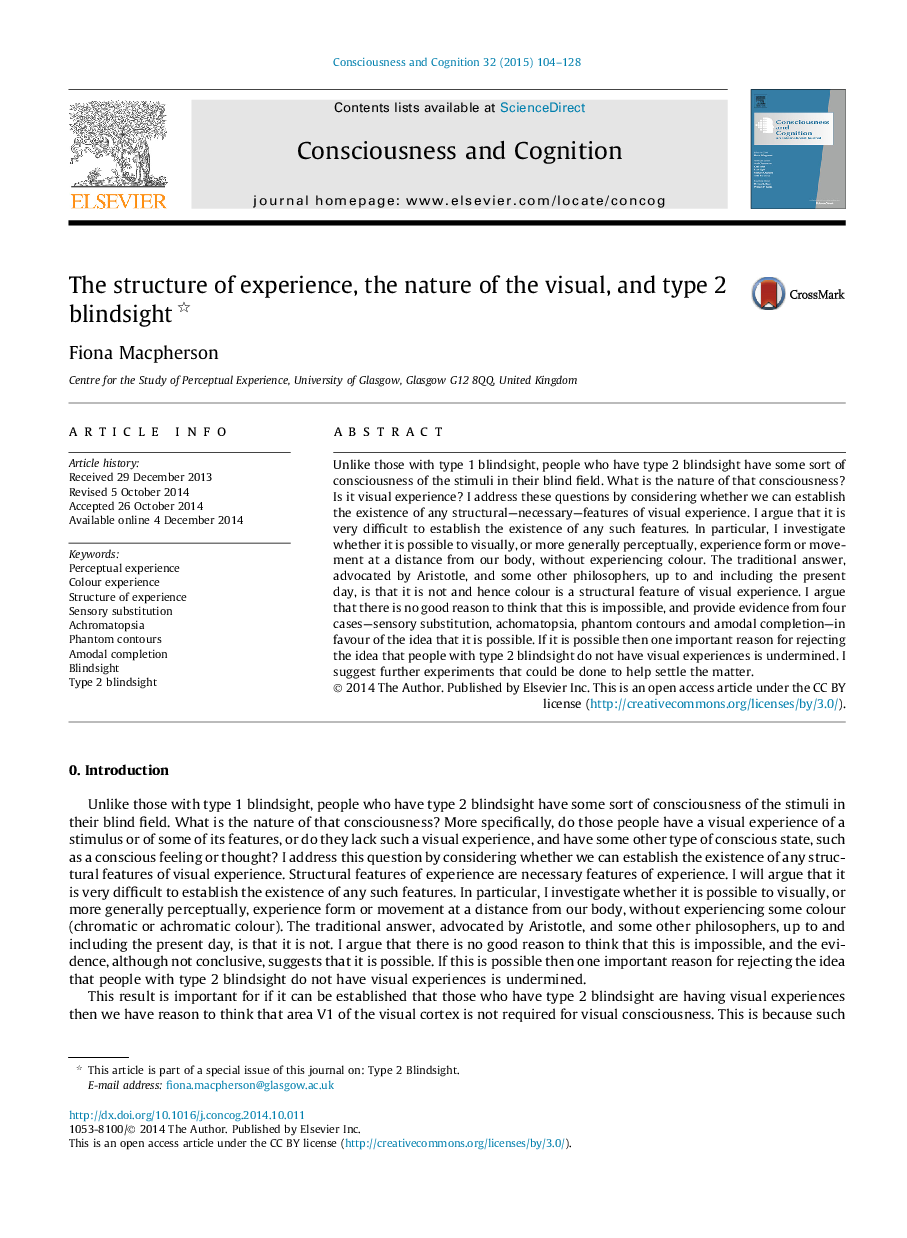| Article ID | Journal | Published Year | Pages | File Type |
|---|---|---|---|---|
| 7289553 | Consciousness and Cognition | 2015 | 25 Pages |
Abstract
Unlike those with type 1 blindsight, people who have type 2 blindsight have some sort of consciousness of the stimuli in their blind field. What is the nature of that consciousness? Is it visual experience? I address these questions by considering whether we can establish the existence of any structural-necessary-features of visual experience. I argue that it is very difficult to establish the existence of any such features. In particular, I investigate whether it is possible to visually, or more generally perceptually, experience form or movement at a distance from our body, without experiencing colour. The traditional answer, advocated by Aristotle, and some other philosophers, up to and including the present day, is that it is not and hence colour is a structural feature of visual experience. I argue that there is no good reason to think that this is impossible, and provide evidence from four cases-sensory substitution, achomatopsia, phantom contours and amodal completion-in favour of the idea that it is possible. If it is possible then one important reason for rejecting the idea that people with type 2 blindsight do not have visual experiences is undermined. I suggest further experiments that could be done to help settle the matter.
Related Topics
Life Sciences
Neuroscience
Cognitive Neuroscience
Authors
Fiona Macpherson,
